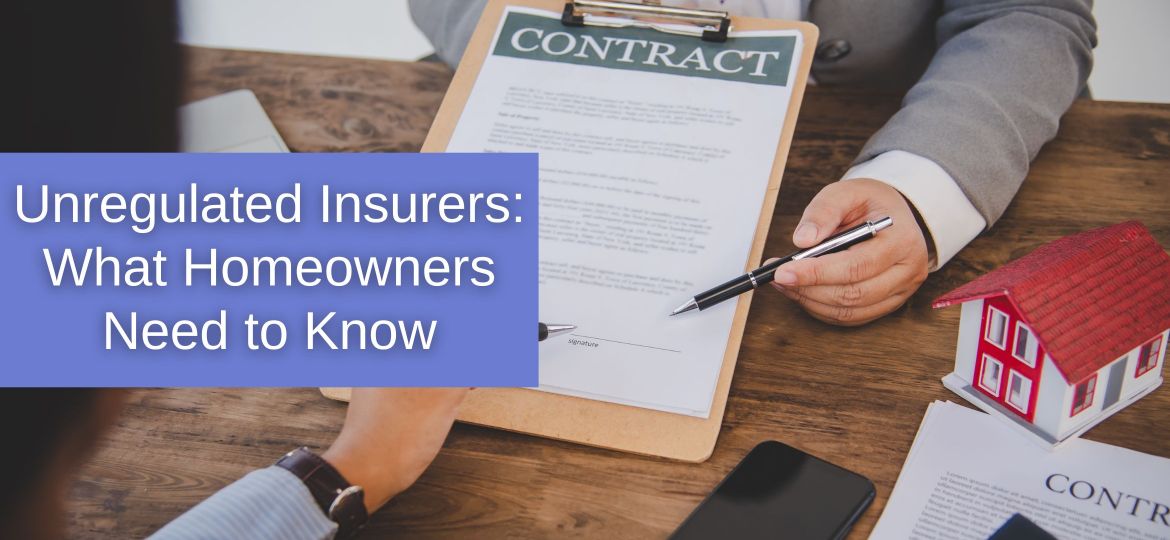
In high-risk areas like Louisiana, Mississippi, Florida, and California, securing homeowners insurance has become a daunting task. For instance, in 2023, over 30,000 homeowners in Louisiana faced policy non-renewals due to heightened hurricane risks, leaving many desperate for coverage. This is where surplus line insurers, often called unregulated or non-admitted insurers, step in, offering a critical alternative when traditional insurers pull out of volatile markets. These carriers provide a lifeline for homeowners but come with unique risks and considerations. In this blog, we’ll explore the rise of surplus line insurers in high-risk regions and what homeowners need to know to make informed choices. At Fassbender Insurance Agency, we’re here to guide Louisiana and Mississippi residents through these complex insurance decisions to protect their homes.
What Are Surplus Line Insurers?
Surplus line insurers, or non-admitted insurers, offer coverage for risks that standard, state-licensed (admitted) insurers deem too risky or unconventional to cover. Unlike admitted insurers, surplus line carriers are not licensed in the state where the policy is issued but are approved to operate through licensed surplus lines brokers. This means they face less oversight from state insurance departments and are not backed by state guaranty funds, which protect policyholders if an admitted insurer fails. Policies are typically placed through brokers, such as Fassbender Insurance, after at least three admitted insurers decline to provide coverage. These insurers are commonly used for properties in disaster-prone areas, homes with a history of claims, or unique risks like coastal properties exposed to hurricanes or flooding.
The Rise of Surplus Line Insurers in High-Risk Areas
Climate change and the increasing frequency of natural disasters have transformed the homeowners insurance market. In high-risk regions like Louisiana, Mississippi, Florida, and California, traditional insurers are raising rates, non-renewing policies, or exiting entirely. For example, major carriers like State Farm and Allstate have scaled back in California due to wildfire risks, while in Florida, surplus lines accounted for over 15% of homeowners policies by 2024. Surplus line insurers have become a critical “safety valve,” stepping in where standard markets have retreated. In Louisiana and Mississippi, where hurricanes and flooding pose ongoing threats, surplus lines are filling gaps, with premiums for these policies growing by roughly 20% annually in some Gulf Coast areas. This shift highlights the growing reliance on non-admitted insurers as traditional markets struggle to handle escalating risks.
Implications for Homeowners Seeking Coverage
The growth of surplus line insurers offers both solutions and challenges for homeowners in high-risk areas like Louisiana and Mississippi. Availability is a major advantage: these insurers step in when traditional markets refuse coverage, ensuring homeowners can avoid going uninsured—a critical issue in regions vulnerable to hurricanes or flooding. However, costs are often steep, with premiums reflecting the higher risk and lack of state rate regulation. Policies may also have coverage limitations, such as higher deductibles, exclusions for specific perils (like windstorm damage), or less comprehensive terms than those from admitted insurers. Additionally, consumer protections are weaker; surplus line insurers aren’t backed by state guaranty funds, so homeowners face greater risk if the insurer goes bankrupt. Over time, dependence on surplus lines could lead to a two-tiered market, where only wealthier homeowners can afford coverage, potentially deepening housing affordability issues in disaster-prone areas.
Pros and Cons of Using Surplus Line Insurers
Pros:
- Accessibility: Surplus line insurers provide coverage in markets abandoned by standard insurers, offering a vital option for homeowners in high-risk areas like coastal Louisiana or Mississippi.
- Flexible Underwriting: They can insure unique or high-risk properties, such as older homes or those with prior claims, which admitted insurers often decline.
- Customized Coverage: Policies can sometimes be tailored to specific needs, addressing complex risks that standard insurers avoid.
Cons:
- Higher Costs: Premiums and deductibles are generally higher due to the riskier nature of the coverage and lack of regulatory oversight on pricing.
- Limited Oversight: With less state regulation, there are fewer consumer protections, including no access to state guaranty funds if the insurer fails.
- Claims Challenges: Some surplus line insurers may have less efficient claims processes, potentially leading to delays or disputes, especially with less-established carriers.
What Homeowners Need to Know and Do
Navigating the world of surplus line insurers requires careful consideration to ensure you’re making the best choice for your home and budget. Here are key steps homeowners in high-risk areas like Louisiana and Mississippi should take:
- Research and Due Diligence: Before signing with a surplus line insurer, verify their financial stability through ratings from agencies like AM Best. Understand the policy’s terms, including coverage limits, exclusions, and deductibles. This is especially important since surplus line insurers aren’t backed by state guaranty funds.
- Work with a Trusted Broker: Partner with an experienced agency like Fassbender Insurance, which specializes in sourcing reliable surplus lines options. A licensed broker can compare quotes, explain policy details, and ensure you’re working with a reputable carrier tailored to your needs.
- Risk Mitigation: Reduce your home’s insurability risks to potentially lower premiums or improve coverage options. For example, in Gulf Coast areas, consider flood-proofing measures like elevating your home, installing storm shutters, or reinforcing roofs to withstand hurricanes. Pairing your policy with separate flood insurance (often required in Louisiana and Mississippi) can also enhance protection.
- Explore Alternatives: In some cases, state-backed options like Louisiana’s Citizens Property Insurance Corporation or FAIR plans may be available as a last resort. However, these often come with limited coverage and higher costs, so weigh them carefully against surplus lines.
- Questions to Ask: When evaluating a surplus line policy, ask: What perils are excluded? What’s the deductible for hurricane or flood damage? Is there a surplus lines tax, and how much is it? Are there any additional fees or clauses that could affect claims?
Conclusion
Surplus line insurers have become a vital resource for homeowners in high-risk areas like Louisiana and Mississippi, filling gaps left by traditional insurers retreating from volatile markets. While they offer critical access to coverage, they come with trade-offs, including higher costs, limited oversight, and fewer consumer protections. By understanding these dynamics and working with a trusted partner like Fassbender Insurance Agency, homeowners can secure the right coverage to protect their homes and finances. As insurance markets continue to evolve, with ongoing regulatory efforts in states like Florida and California aiming to stabilize coverage, staying informed is key. Contact Fassbender Insurance today for personalized guidance on navigating homeowners insurance in high-risk areas. Let us help you find peace of mind in an unpredictable world.


